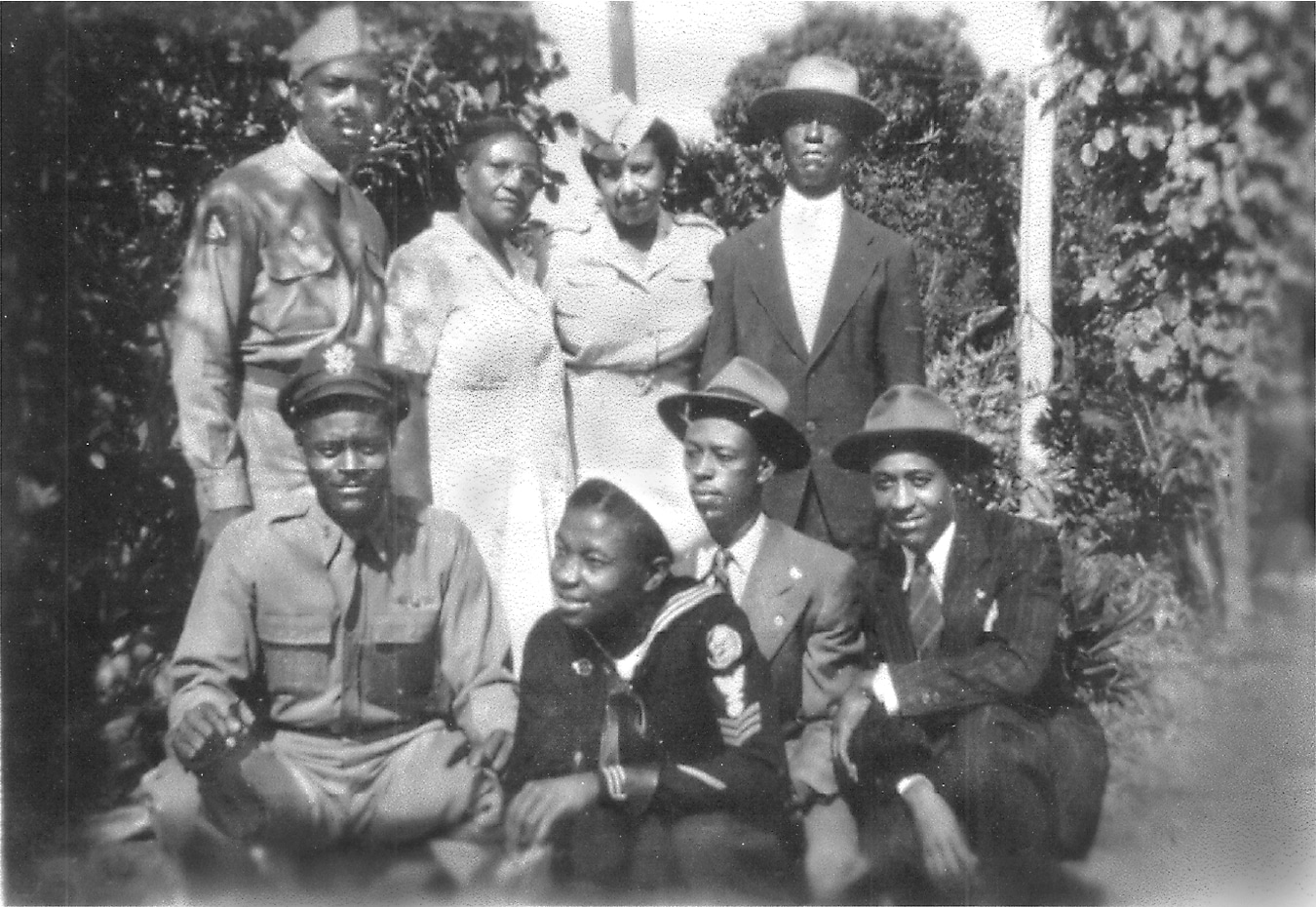
Good Day to all! Unfortunately, the Charlotte County Historical Society’s annual Florida Frontier Days festival has been cancelled for this year. Hope to see you there in 2026!
Did you know that in addition to seven sons of a well-known Punta Gorda family serving their country in several branches of the armed forces during World War II and the Korean War, two were at the vanguard of aviation history? Archie Bailey, born in Tallahassee, and Josephine McIntear of Bellview, Florida, were married in Arcadia on July 20, 1905 and came to town shortly thereafter. He worked at the Punta Gorda Ice Plant, then as a lineman for the DeSoto Telephone Company, and by the 1940’s was a well-known electrician. They had 11 children, 9 boys and 2 girls.
Their oldest, Maurice, born in May 1906, enlisted in the Army shortly after his 36th birthday. He was a driver for the Red Ball Express, a primarily African-American unit tasked with supplying front line troops in the European Theatre during World War II. He also served during the Korean War, making the army his career. Maurice retired as a Staff Sergeant and is interred at Arlington National Cemetery.
Berlin, born in November 1912, enlisted just before his 30th birthday. He served as an Electrician’s Mate 1st Class with the Navy’s 3rd Construction Battalion (Seabees) in the Pacific Theatre during World War II. Upon discharge, he returned home to follow in his Dad’s footsteps, also becoming a well-known electrician and serving for several years on Punta Gorda’s Planning Commission.
Charles, born in November 1918, after his sister Josephine, enlisted shortly before his 24th birthday after attending Bethune-Cookman College for two years on a football scholarship. School founder, Mary McLeod Bethune, instrumental in convincing Franklin D. Roosevelt to establish a flight school for African -American pilots, arranged for his transfer to Alabama’s Tuskegee Institute where he enlisted in the Army Air Corp.
2nd Lieutenant Bailey, the first African-American armed forces pilot from Florida, earned his wings in April 1943. He then joined the 99th Fighter Squadron, better known as the “Red Tail Squadron”, due to the planes’ color scheme, as part of the allied invasion of North Africa. Bailey flew 133 combat missions in the North African and European Theatres piloting a P-40 Warhawk and P-51 Mustang. He is credited with downing two enemy fighter aircraft. His P-40 was named “Josephine”, after his mother and a sister, and the P-51 was “My Buddie”. After the war, he returned to Bethune-Cookman and earned a degree in elementary education, remaining in Volusia County to teach school.
Harding was born in October 1920 and enlisted in the Navy shortly before his 22nd birthday. Think about the math and you’ll see an enlistment pattern with the first four sons. He served as an Electrician’s Mate 2nd Class aboard a destroyer escort, the USS Mason. Looks like the sons had learned a lot from their Dad. The Mason was the Navy’s first ship with a predominantly African-American crew during World War II and served in the Atlantic Theatre. After his discharge, Harding earned a degree in education from Bethune-Cookman, teaching and becoming a school principal in Florida’s Brevard County.
Paul, born in September 1922, joined the Army in March 1943. PFC Bailey was a Chaplain’s Assistant with Company D, 2805th Engineering Battalion in the Pacific Theatre. After his discharge, he also attended Bethune-Cookman College earning a degree in Music, then graduated from the Boston Conservancy of Music. Paul became a high school music teacher in north Florida’s Madison County.
After the Baileys’ second daughter Mable, Arthur was born in March 1925. In February 1945, he began his service with the Marine Corp. Corporal Bailey served with the 2nd Casual Company, Headquarter Battalion in the Pacific Theatre. In the Marine Corp, a “casual company” is where men and women are placed awaiting permanent assignment or discharge.
The youngest son Carl was born in September 1929. Too young to follow his brothers into World War II, he joined the Air Force in June 1951 and flew F-84 Thunderjets. 1st Lieutenant Bailey was one of only two African – American fighter pilots from Florida during the Korean war, but saw no combat duty. Tragically he died in an automobile accident, only 28 years old.
The “Fighting Bailey Brothers” answered their country’s call and have been memorialized by having the passenger terminal at the Punta Gorda Airport and a city park at the corner of Dr. Martin Luther King, Jr. Boulevard and East Virginia Avenue named in their honor. There are also photos of the brothers at the park. Five of the brothers are interred at the Lt. Carl Bailey Cemetery on Scott Avenue.
“Did You Know” appears, typically, every other Wednesday, courtesy of this newspaper and the Charlotte County Historical Society. The Society’s mission is to help promote and preserve Charlotte County’s rich history. We are also always looking for volunteers and interested individuals to serve as board members. If you believe our area’s history is as important as we do, please visit Charlotte County Historical Society on-line at https://cchistoricalsociety.com/, or call 941- 769-1270 for more information
Check out History Services’ yearlong project, “Telling Your Stories: History in the Parks”. It began in January 2021 with placement of the first interpretive sign “Charlotte Harbor Spa” at South County Regional Park. The last was dedicated December 15, 2021 at Centennial Park featuring Florida postcards. All dedicated signs can be viewed at online library resources. Select “Programs and Services”, then “History Services” and “Virtual Programs”.
Visit the same site to access recently released oral histories featuring 40 local folks. Select “History Services” and scroll down, or phone 941-629-7278, to find out what history related programs and videos are available, in addition to information on the “Cookie House” tours coming up at Cedar Point Environmental Center in Englewood.
February 5 column


